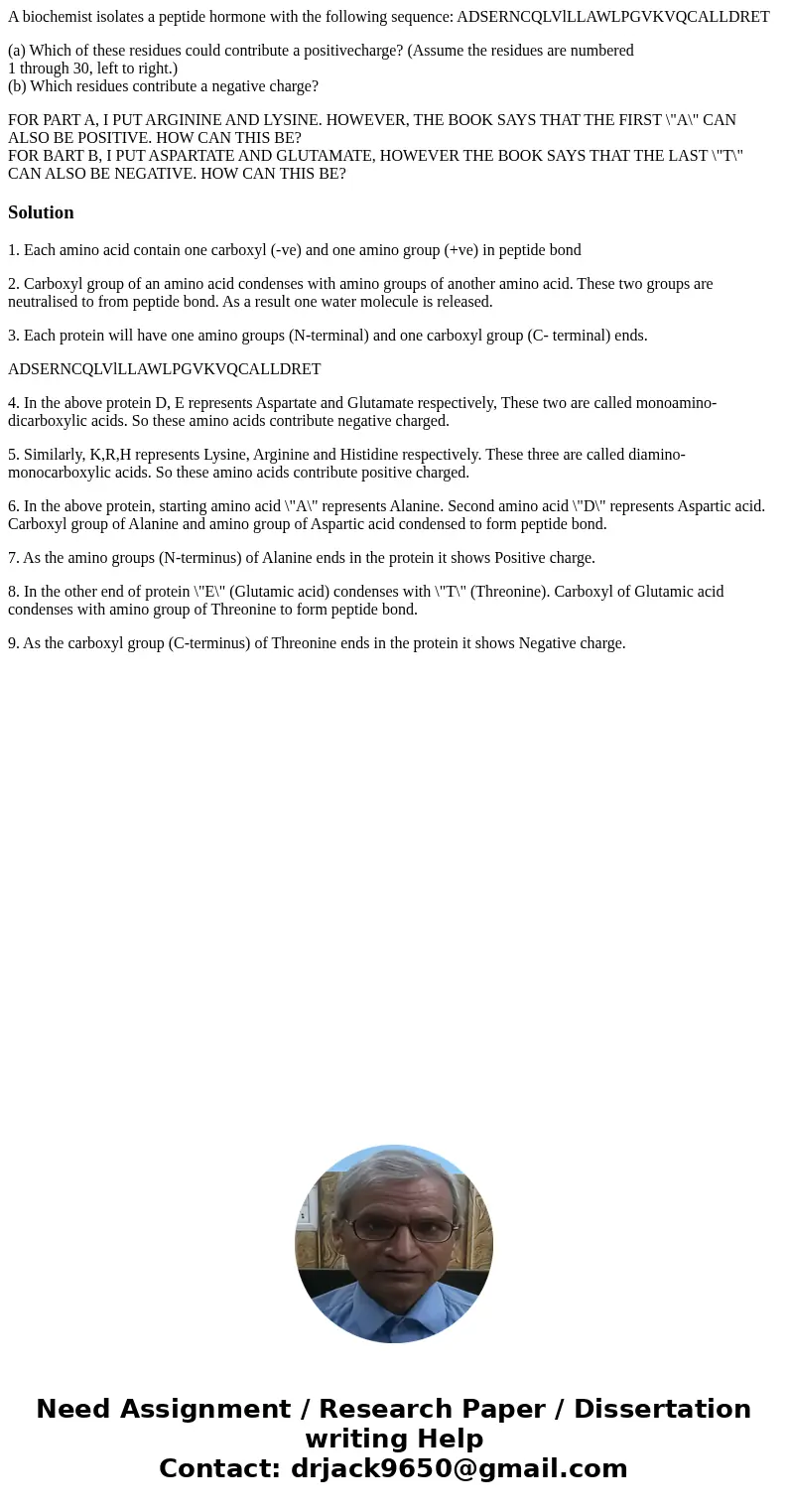A biochemist isolates a peptide hormone with the following s
A biochemist isolates a peptide hormone with the following sequence: ADSERNCQLVlLLAWLPGVKVQCALLDRET
(a) Which of these residues could contribute a positivecharge? (Assume the residues are numbered
1 through 30, left to right.)
(b) Which residues contribute a negative charge?
FOR PART A, I PUT ARGININE AND LYSINE. HOWEVER, THE BOOK SAYS THAT THE FIRST \"A\" CAN ALSO BE POSITIVE. HOW CAN THIS BE?
FOR BART B, I PUT ASPARTATE AND GLUTAMATE, HOWEVER THE BOOK SAYS THAT THE LAST \"T\" CAN ALSO BE NEGATIVE. HOW CAN THIS BE?
Solution
1. Each amino acid contain one carboxyl (-ve) and one amino group (+ve) in peptide bond
2. Carboxyl group of an amino acid condenses with amino groups of another amino acid. These two groups are neutralised to from peptide bond. As a result one water molecule is released.
3. Each protein will have one amino groups (N-terminal) and one carboxyl group (C- terminal) ends.
ADSERNCQLVlLLAWLPGVKVQCALLDRET
4. In the above protein D, E represents Aspartate and Glutamate respectively, These two are called monoamino-dicarboxylic acids. So these amino acids contribute negative charged.
5. Similarly, K,R,H represents Lysine, Arginine and Histidine respectively. These three are called diamino-monocarboxylic acids. So these amino acids contribute positive charged.
6. In the above protein, starting amino acid \"A\" represents Alanine. Second amino acid \"D\" represents Aspartic acid. Carboxyl group of Alanine and amino group of Aspartic acid condensed to form peptide bond.
7. As the amino groups (N-terminus) of Alanine ends in the protein it shows Positive charge.
8. In the other end of protein \"E\" (Glutamic acid) condenses with \"T\" (Threonine). Carboxyl of Glutamic acid condenses with amino group of Threonine to form peptide bond.
9. As the carboxyl group (C-terminus) of Threonine ends in the protein it shows Negative charge.

 Homework Sourse
Homework Sourse